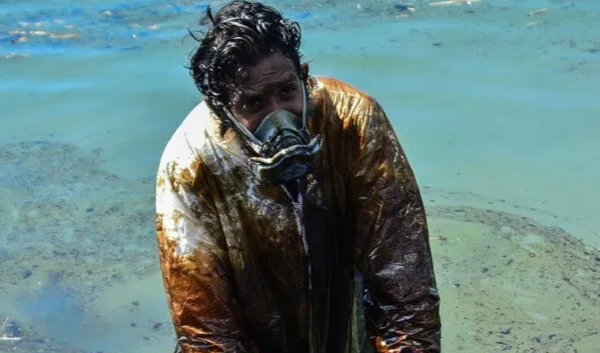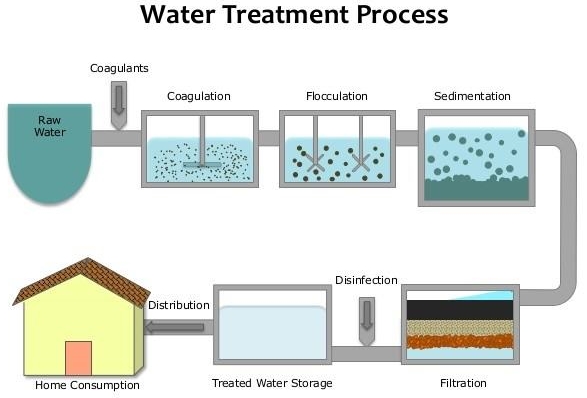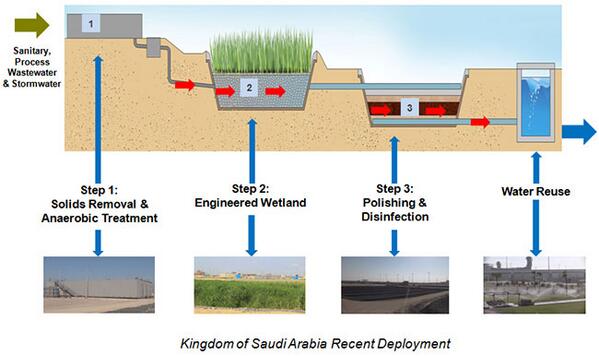




Water pollution is the contamination of water sources by substances which make the water unusable for drinking, cooking, cleaning, swimming, and other activities. Pollutants include chemicals, trash, bacteria, and parasites.





Water is uniquely vulnerable to pollution. Known as a “universal solvent,” water is able to dissolve more substances than any other liquid on earth. It’s the reason we have Kool-Aid and brilliant blue waterfalls. It’s also why water is so easily polluted. Toxic substances from farms, towns, and factories readily dissolve into and mix with it, causing water pollution.

Marine pollution is a combination of chemicals and trash, most of which comes from land sources and is washed or blown into the ocean. This pollution results in damage to the environment, to the health of all organisms, and to economic structures worldwide.

Waste water from manufacturing or chemical processes in industries contributes to water pollution. Industrial waste water usually contains specific and readily identifiable chemical compounds. Water pollution is concentrated within a few subsectors, mainly in the form of toxic wastes and organic pollutants.

Agriculture is a major contributor to water pollution from nonpoint sources. The use of fertilizers as well as surface runoff from farm fields, pastures and feedlots leads to nutrient pollution. In addition to plant-focused agriculture, fish-farming is also a source of pollution. Additionally, agricultural runoff often contains high levels of pesticides.

In order to thrive, healthy ecosystems rely on a complex web of
animals, plants, bacteria, and fungi—all of which interact,
directly or indirectly, with each other. Harm to any of these
organisms can create a chain effect, imperilling entire aquatic
environments.
When water pollution causes an algal bloom in a lake or marine
environment, the proliferation of newly introduced nutrients
stimulates plant and algae growth, which in turn reduces oxygen
levels in the water. This dearth of oxygen, known as
eutrophication, suffocates plants and animals and can create
“dead zones,” where waters are essentially devoid of life. In
certain cases, these harmful algal blooms can also produce
neurotoxins that affect wildlife, from whales to sea turtles.
Chemicals and heavy metals from industrial and municipal
wastewater contaminate waterways as well. These contaminants are
toxic to aquatic life—most often reducing an organism’s life
span and ability to reproduce—and make their way up the food
chain as predator eats prey. That’s how tuna and other big fish
accumulate high quantities of toxins, such as mercury.
Marine ecosystems are also threatened by marine debris, which
can strangle, suffocate, and starve animals. Much of this solid
debris, such as plastic bags and soda cans, get swept into
sewers and storm drains and eventually out to sea, turning our
oceans into trash soup and sometimes consolidating to form
floating garbage patches. Discarded fishing gear and other types
of debris are responsible for harming more than 200 different
species of marine life.

Drinking or using polluted water can result in health problems,
such as digestive issues, toxicity and death, or chronic
toxicity and neurological issues from more serious chemical
pollution.
Waterborne pathogens are the most common cause of illness in
humans from polluted water. Diseases from the consumption of
contaminated water include giardia, typhoid, and cholera.
Accidental and illegal leaks from sewage facilities and runoff
from urban areas and agriculture farms occur even in wealthy
nations, affecting everyone’s water quality. In fact, every
year, the United Nations reports that 85,700 children die from
diarrhea caused by contaminated water.

Water treatment is any process that improves the quality of
water to make it appropriate for a specific end-use. The end use
may be drinking, industrial water supply, irrigation, river flow
maintenance, water recreation or many other uses, including
being safely returned to the environment.
Water treatment removes contaminants and undesirable components,
or reduces their concentration so that the water becomes fit for
its desired end-use. This treatment is crucial to human health
and allows humans to benefit from both drinking and irrigation
use.

Industrial wastewater treatment describes the processes used for
treating wastewater that is produced by industries as an
undesirable by-product. After treatment, the treated industrial
wastewater (or effluent) may be reused or released to a sanitary
sewer or to surface water in the environment.
Some industrial facilities generate wastewater that can be
treated in sewage treatment plants. Most industrial processes,
such as petroleum refineries, chemical and petrochemical plants
have their own specialized facilities to treat their wastewaters
so that the pollutant concentrations in the treated wastewater
comply with the regulations regarding the disposal of
wastewaters into sewers or into rivers, lakes or oceans.
This applies to industries that generate wastewater with high
concentrations of organic matter (e.g. oil and grease), toxic
pollutants (e.g. heavy metals, volatile organic compounds) or
nutrients such as ammonia. Some industries install a
pre-treatment system to remove some pollutants (e.g., toxic
compounds), and then discharge the partially treated wastewater
to the municipal sewer system.

Agricultural wastewater treatment is a farm management agenda
for controlling pollution from confined animal operations and
from surface runoff that may be contaminated by chemicals in
fertilizer, pesticides, animal slurry, crop residues or
irrigation water.
Agricultural wastewater treatment is required for continuous
confined animal operations like milk and egg production. It may
be performed in plants using mechanized treatment units similar
to those used for industrial wastewater.
Where land is available for ponds, settling basins and
facultative lagoons may have lower operational costs for
seasonal use conditions from breeding or harvest cycles. Animal
slurries are usually treated by containment in anaerobic lagoons
before disposal by spray or trickle application to grassland.
Constructed wetlands are sometimes used to facilitate the
treatment of animal wastes.